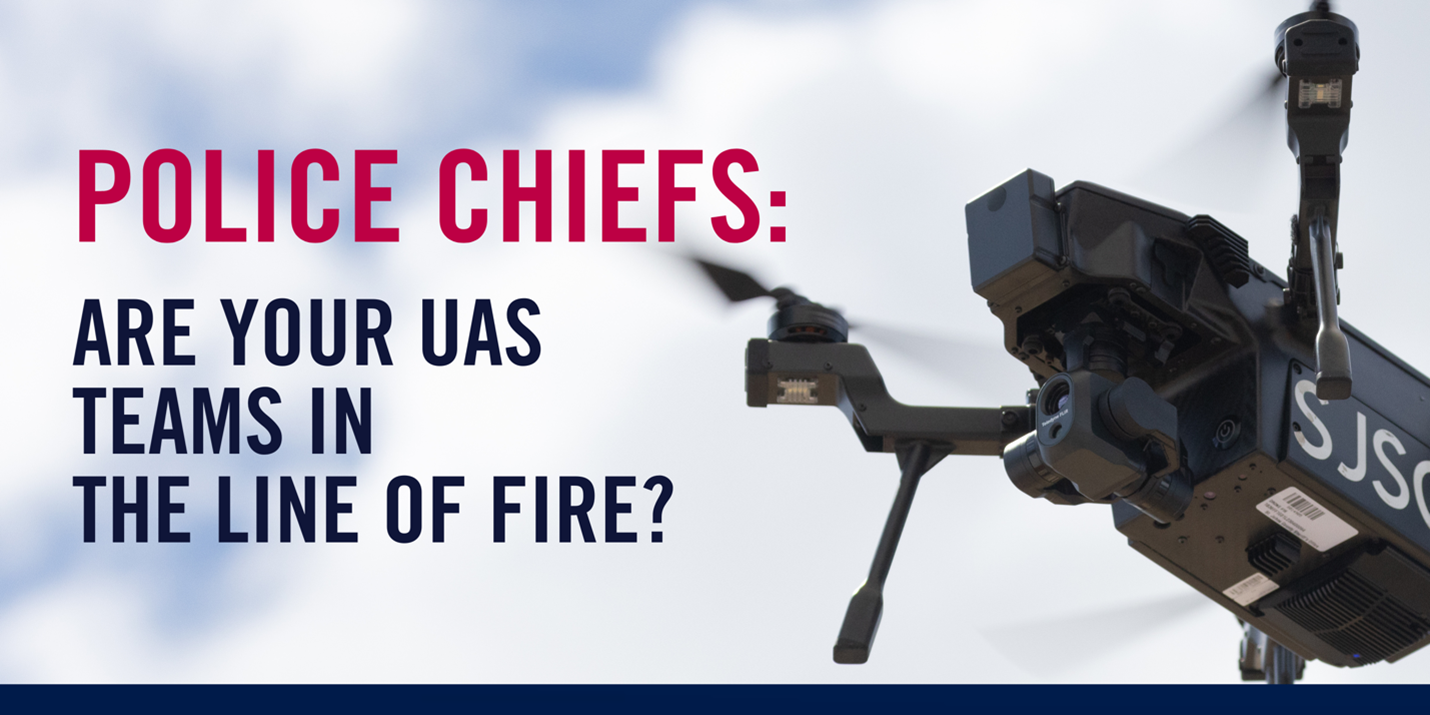
State of UAS Usage in Law Enforcement
The most recent report from the U.S. Bureau of Justice Statistics (2022) states that there are 17,541 state and local law enforcement agencies across the United States.1 Among those agencies, more than 1,500 police departments engage unmanned aerial systems (i.e., drones) for search and rescue, crime scene documentation, and even suspect pursuit.2 Given the record-breaking violence recorded across major U.S. cities in the past five years, police departments are increasingly wary of endangering the lives of officers in unknown threat situations.3 The introduction of drones provides a cost-effective option that increases situational awareness in mere minutes and drastically reduces the risk to officer safety. Looking forward, it is “only a matter of time before the majority of first responders are using drones as part of a comprehensive DFR [Drone as First Responder] program,” says Kevin Moran, general manager of Safely Operating Aircraft Remotely (SOAR).4
So, where are all the Drone Ops teams?
Unlimited Potential, Limited Support
First, the U.S. Federal Aviation Administration requires that police departments fly drones only within operators’ line of sight, which means pilots may be close enough to remain in harm’s way at least until policies and regulations get updated over time.5 For many departments, this concern may still outweigh the benefits of drone usage. This is especially true if the pilot struggles to remain locally vigilant due to focusing on the drone’s footage.
Secondly (and arguably more pressing), many police departments lack the comprehensive training options to put drones in use.
Indeed, cities such as Chula Vista and Beverly Hills, both in California, have invested heavily in the integration of drones and drone training for their police departments but in general, the demand for drone inclusion as standard equipment continues to outpace available training, leaving first responders at risk, potentially ineffective, and inefficient during high-risk, time sensitive scenarios.6 This can certainly lead to a dangerous combination that can be life-threatening at a minimum.
Is Your Department Falling Behind?
Police departments have successfully deployed drones to assist in a variety of situations, with new examples popping up every day. However, while the need for trained drone operators increases, comprehensive, nationally available, and standardized training to bolster skill sets in drone maneuverability remains stagnant.
Clearly drone maneuvers for basic search and rescue, suspect surveillance and pursuit, and payload drop-off vary drastically. An untrained operator can cost precious seconds that make all the difference between a successful operation or a potentially deadly outcome. Further, an untrained operator raises the risk of placing officers’ lives or others at risk and could result in legal liabilities to the department itself. “It’s almost like putting the people in the command center on the scene,” says Moran, “and assuming that they are able to instantly adapt their specific command center skills to on-site, in-the-moment scenarios.”
There are several organizations available to assist with UAS training. However, selecting a partner in education can be tricky if it’s not clear what you should be checking for. The right training program should be more than a textbook and a quiz, affordable, and nationally available.
-
-
- Is the program nationally available?
- Is the program standardized?
- Does the program specifically focus on law enforcement and public safety maneuvering?
- Was the program developed and reviewed by leaders in law enforcement, fire and rescue, and emergency medical service personnel?
- Are students easily able to sign up online?
- Does the program offer a combination of training methods: in-classroom, simulation, on-site practical training, etc.?
- Do officers receive accreditation or certificates?
- Is the program supported by respected and recognizable entities within law enforcement?
- Is the program affordable? Could an entire department receive this training?
-
Saving Time; Saving Lives
The future of law enforcement is almost certainly tied to the successful operation of drones. When crewed by adequately trained officers, drones can only strengthen the capabilities across the department’s workforce. While the maneuvering skills specific to piloting drones for mission-critical tasks are unlike general drone flying, they can be the difference between life and death.
So why leave training to chance?
|
Safely Operating Aircraft Remotely (SOAR) is a UAS training program for public good, pioneered by MITRE Engenuity. For more information visit mitre-engenuity.org/soar. About Safely Operating Aircraft Remotely: SOAR Program educates FAA-licensed public safety remote operators to improve the function and execution of maneuvering small uncrewed aircraft systems, or drones, in response to safety incidents, tactical operations, and specialized public safety scenarios. Join us in our mission to support a nationally standardized training program for UAS operators in public safety. About MITRE Engenuity: MITRE Engenuity catalyzes the collective R&D strength of the broader U.S. federal government, academia, and private sector to tackle national and global challenges, such as protecting critical infrastructure, creating a resilient semiconductor ecosystem, accelerating use case innovation in 5G, and democratizing threat-informed cyber defense. |
Notes:
1Andrea M. Gardner and Kevin M. Scott, Census of State and Local Law Enforcement Agencies, 2018 – Statistical Tables (U.S. Bureau of Justice Statistics, 2022).
2Patrick Sisson, “Welcome to Chula Vista, Where Police Drones Respond to 911 Calls,” MIT Technology Review, February 27, 2023.
3American Violence website.
4Kevin Moran (general manager, SOAR), email, June 3, 2024.
514 CFR Part 107—Small Unmanned Aircraft Systems (2016).
6Salvador Hernandez, “Police Drones Could Soon Crisscross the Skies. Cities Need To Be Ready, ACLU Warns,” Los Angeles Times, July 23, 2023.


